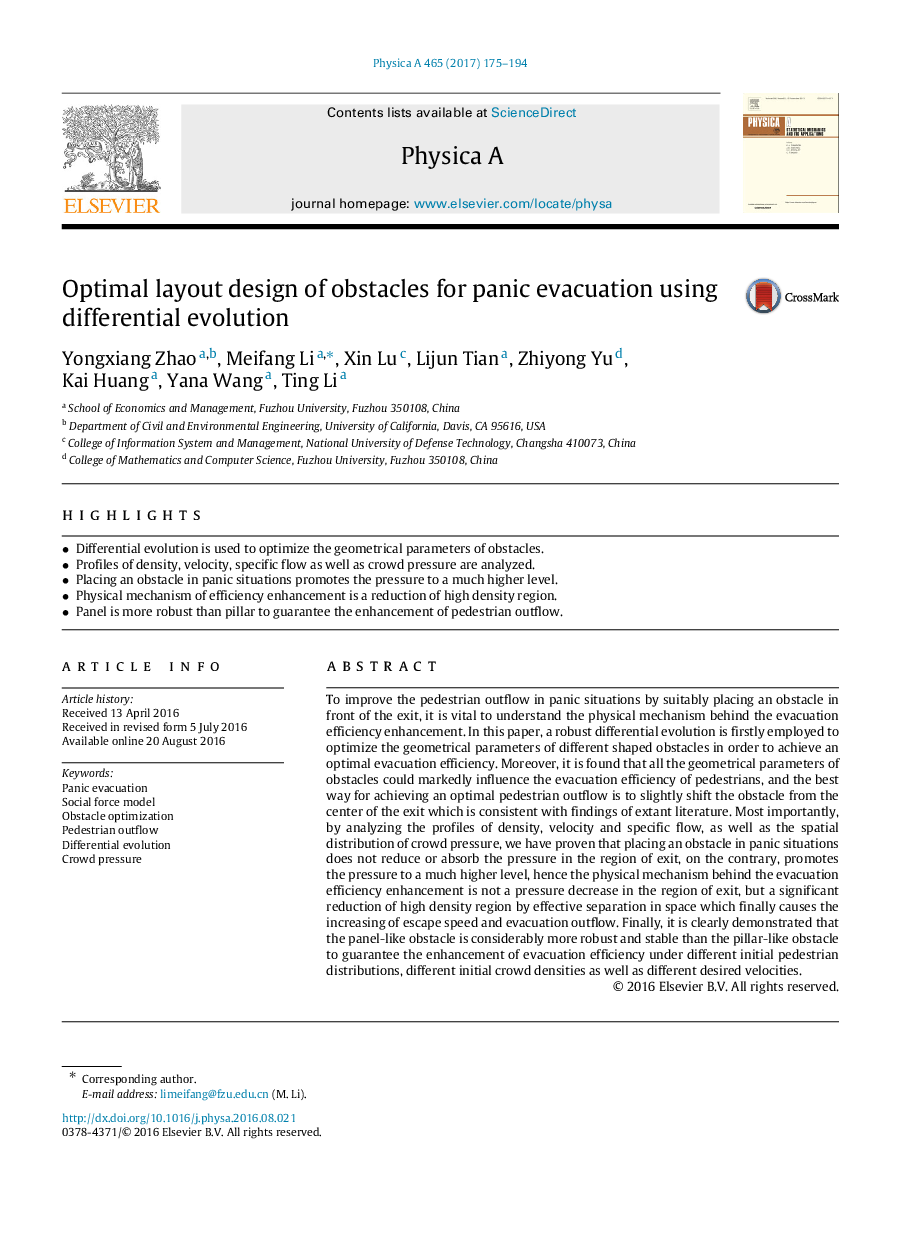| Article ID | Journal | Published Year | Pages | File Type |
|---|---|---|---|---|
| 974194 | Physica A: Statistical Mechanics and its Applications | 2017 | 20 Pages |
Abstract
To improve the pedestrian outflow in panic situations by suitably placing an obstacle in front of the exit, it is vital to understand the physical mechanism behind the evacuation efficiency enhancement. In this paper, a robust differential evolution is firstly employed to optimize the geometrical parameters of different shaped obstacles in order to achieve an optimal evacuation efficiency. Moreover, it is found that all the geometrical parameters of obstacles could markedly influence the evacuation efficiency of pedestrians, and the best way for achieving an optimal pedestrian outflow is to slightly shift the obstacle from the center of the exit which is consistent with findings of extant literature. Most importantly, by analyzing the profiles of density, velocity and specific flow, as well as the spatial distribution of crowd pressure, we have proven that placing an obstacle in panic situations does not reduce or absorb the pressure in the region of exit, on the contrary, promotes the pressure to a much higher level, hence the physical mechanism behind the evacuation efficiency enhancement is not a pressure decrease in the region of exit, but a significant reduction of high density region by effective separation in space which finally causes the increasing of escape speed and evacuation outflow. Finally, it is clearly demonstrated that the panel-like obstacle is considerably more robust and stable than the pillar-like obstacle to guarantee the enhancement of evacuation efficiency under different initial pedestrian distributions, different initial crowd densities as well as different desired velocities.
Related Topics
Physical Sciences and Engineering
Mathematics
Mathematical Physics
Authors
Yongxiang Zhao, Meifang Li, Xin Lu, Lijun Tian, Zhiyong Yu, Kai Huang, Yana Wang, Ting Li,
